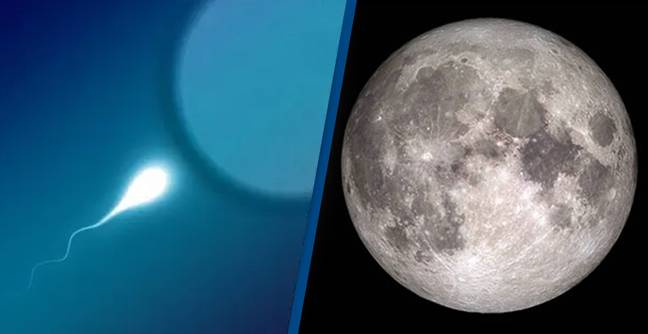Scientists want to send 6.7 million sperm samples to the moon as a ‘global insurance policy’

Scientists have suggested that humans could buy into a “modern global insurance policy” by building an “ark” filled with 6.7 million sperm samples — on the moon.
The ark would involve shooting the sperm and ova samples of 6.7 million species up to the moon via multiple payloads. The samples would then be stored in a vault beneath the surface of the moon, in a “lunar pit,” where they could be kept secure.
According to a New York Post report, this would be similar, conceptually, to the “Doomsday” seed vault in Svalbard, Norway, which currently holds more than a million crop samples originating from almost every country in the world.

The team of six researchers from the University of Arizona presented their idea at the Institute of Electrical and Electronics Engineers (IEEE) Aerospace Conference, where they said their proposal would protect mankind from extinction.
This lunar ark, the researchers said, could help the earth repopulate if a catastrophic disaster — such as a deadly epidemic, a supervolcanic eruption, a large-scale nuclear war, widespread drought, or an asteroid — were to occur.
“Earth is naturally a volatile environment,” said study author Jekan Thangavelautham in his presentation on the paper, titled “Lunar Pits and Lava Tubes for a Modern Ark,” adding that an Earth-based repository of samples would still leave specimens vulnerable to getting destroyed in a massive disaster.
While this might seem like a suggestion straight out of science fiction, the scientists behind this proposal have calculated that sending the cryogenically-frozen samples of sperm, eggs, spores, and seeds of some 6.7 million species to the relative safety of the moon might well be a feasible operation.
According to an IFL Science report, Thangavelautham said in his presentation that the facility could be “filled with samples” in 250 flights to the moon. Building the International Space Station, in comparison, required 40 trips.
To prevent the samples from freezing or welding together in the sub-zero temperatures beneath the surface of the moon, the scientists also suggest the facility be powered by solar panels.
IFL Science spoke to Álvaro Díaz-Flores Caminero, a University of Arizona doctoral student leading the thermal analysis for the project, who said that projects like these bring mankind “closer to becoming a space civilization, and to a not-very-distant future where humankind will have bases on the Moon and Mars.”
“Multidisciplinary projects are hard due to their complexity, but I think the same complexity is what makes them beautiful,” Caminero said.

